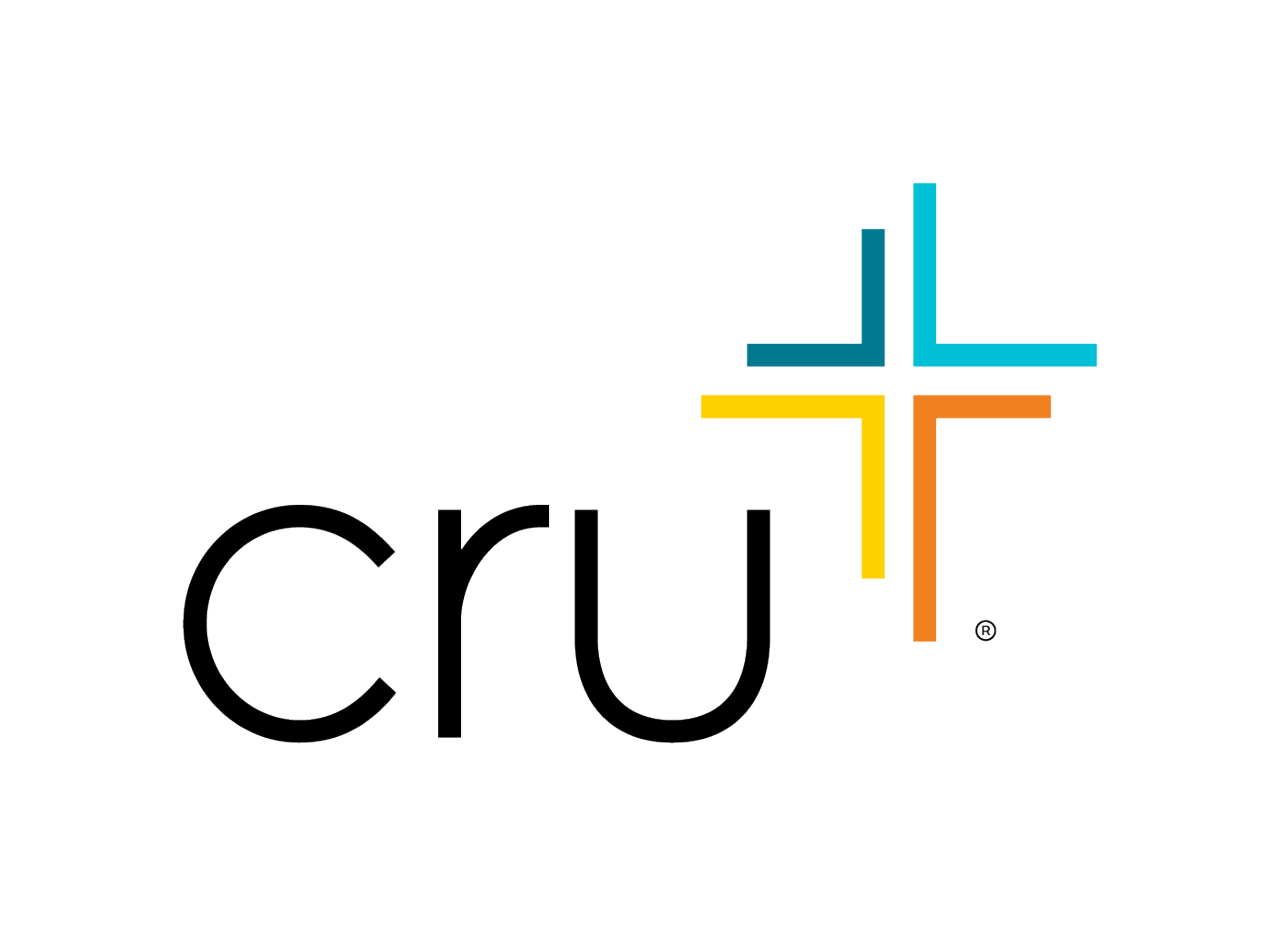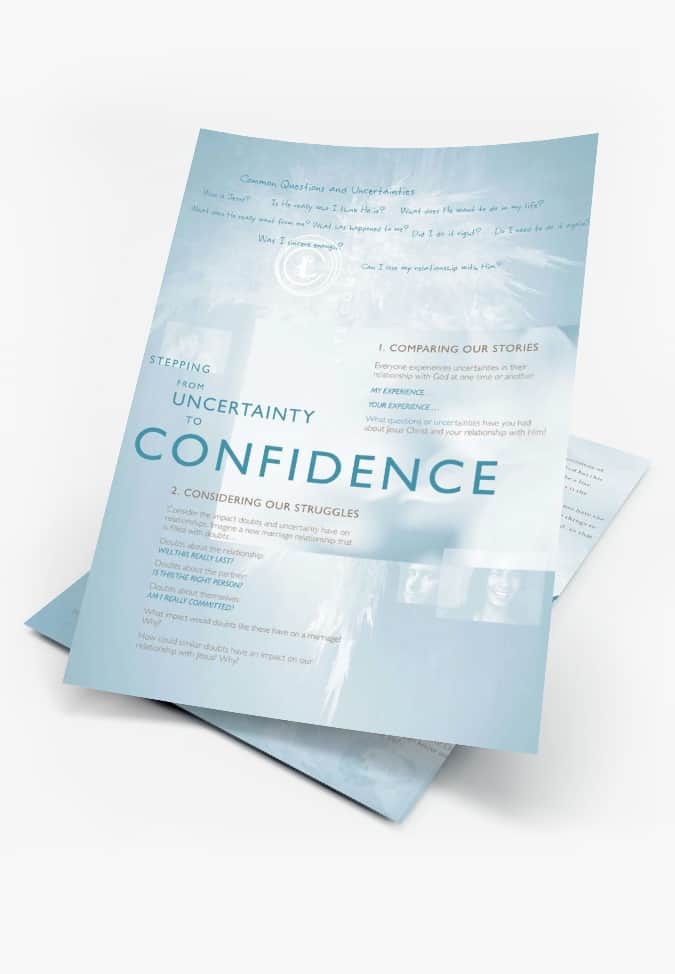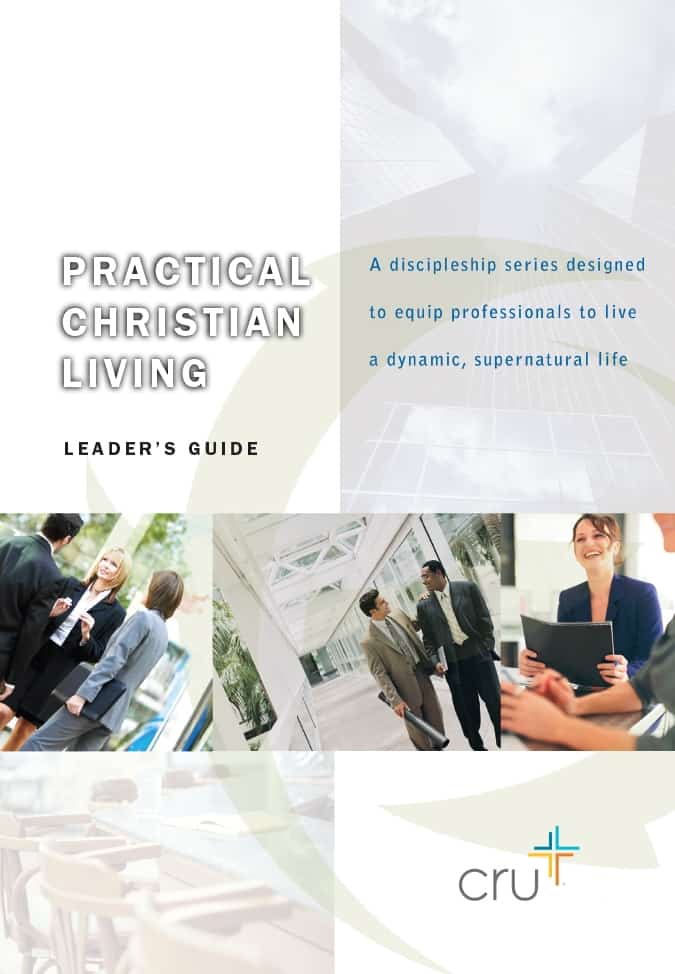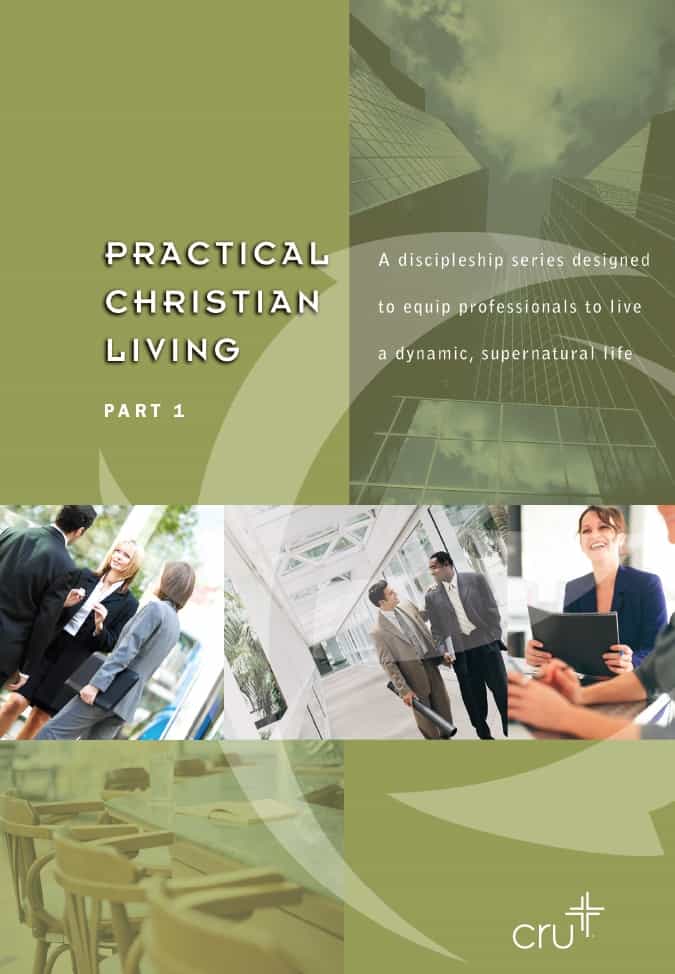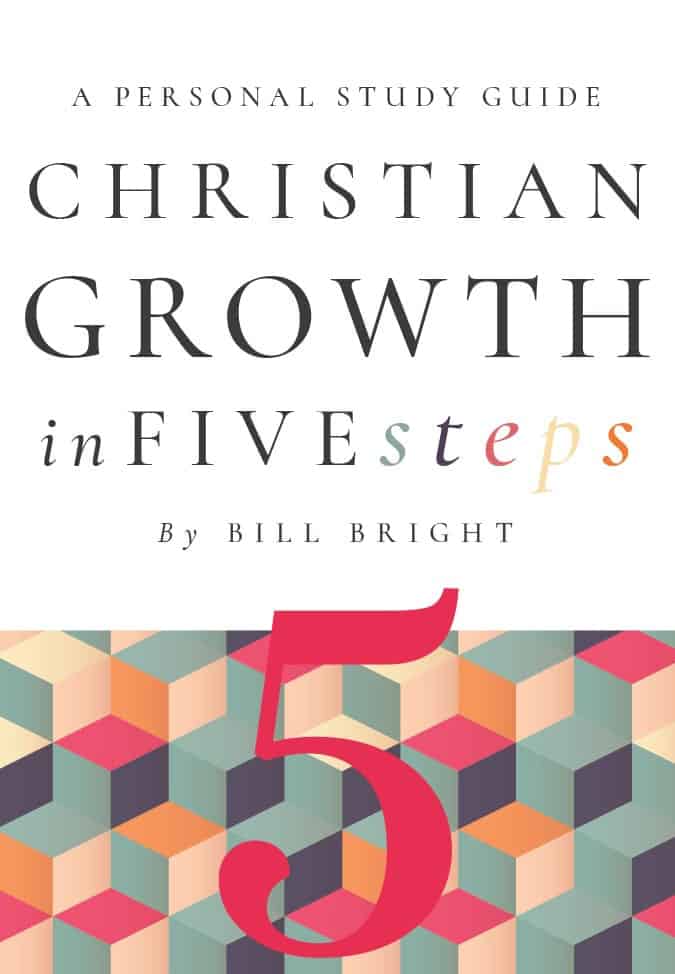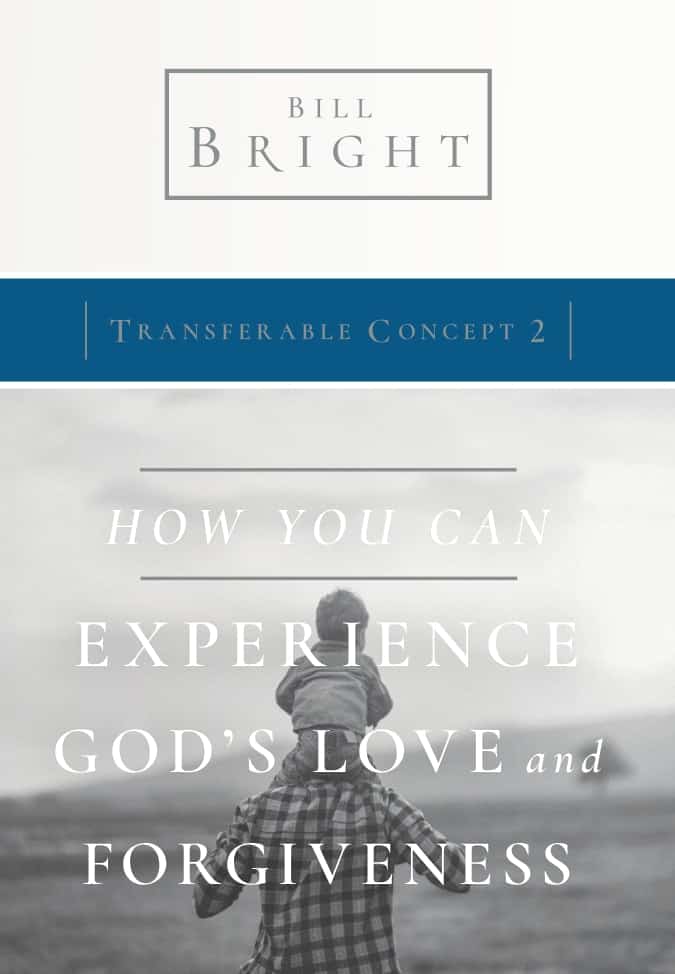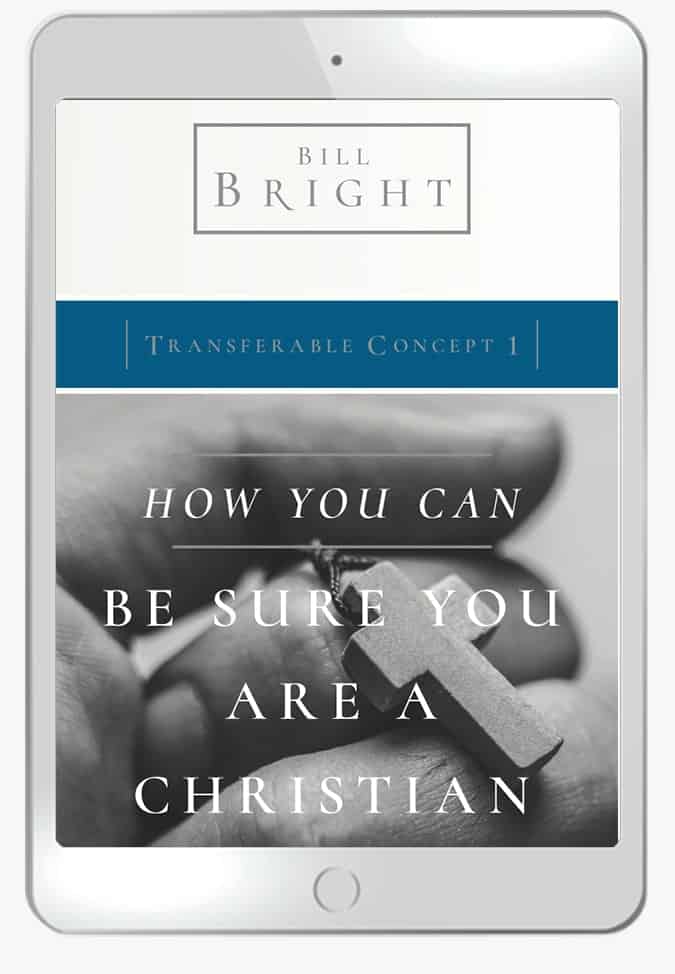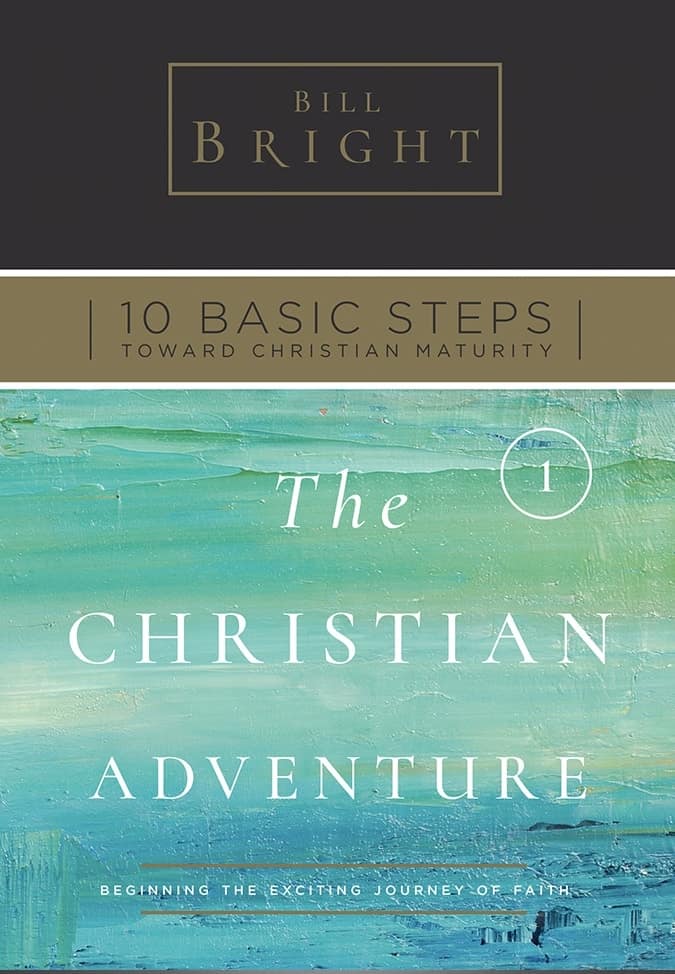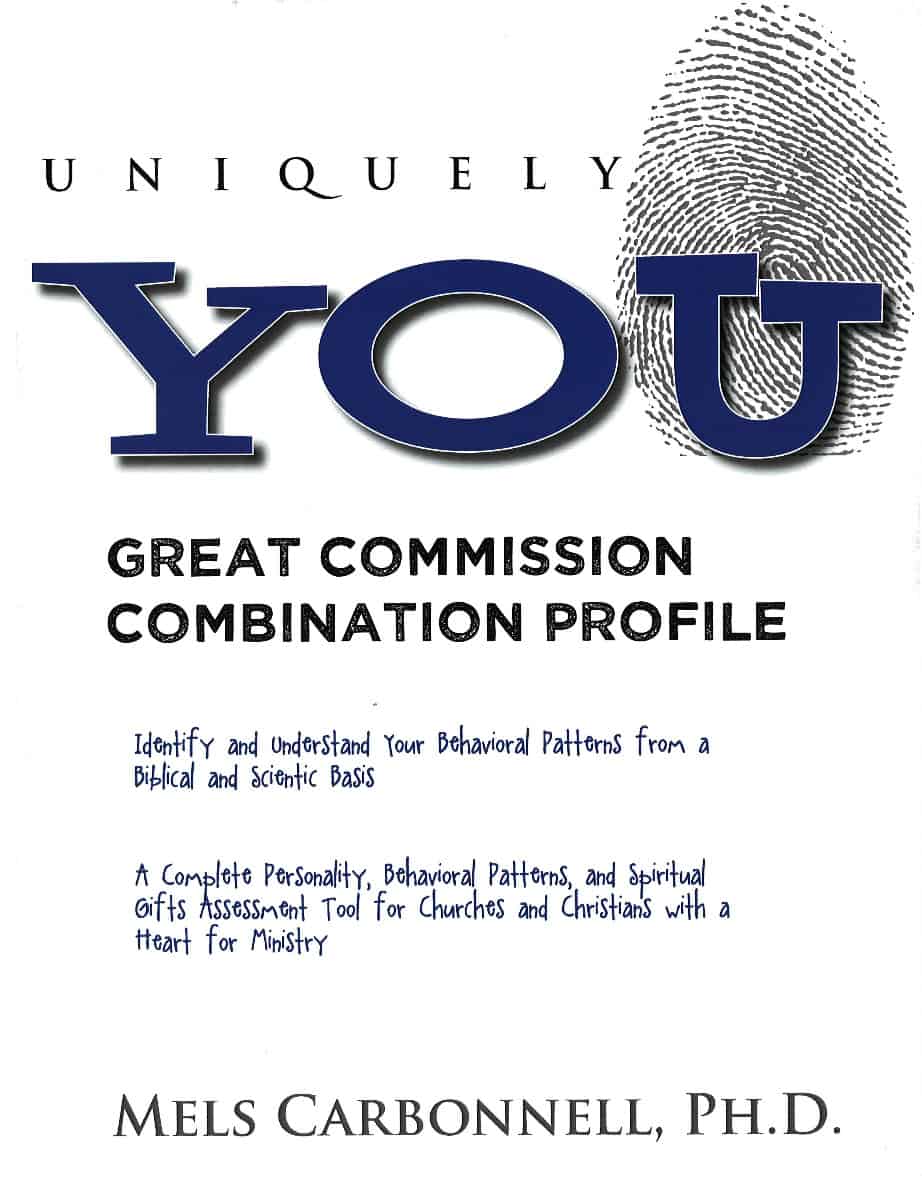Oneness in Generational Diversity: Our Position
Introduction
Cru exists to glorify God by helping fulfill the Great Commission through winning, building and sending in the power of the Holy Spirit and partnering with the body of Christ in evangelism and discipleship.
As we pursue this mission, we do so with Scripture as our anchor and North Star. Our Statement of Faith affirms the Bible is “God’s infallible written Word,” and Scripture is “the supreme and final authority in all matters on which it speaks.” Our work is guided by our belief in and commitment to the Scriptures.
Cru is a generationally diverse organization. Five generations of staff members are represented among us. Our generational differences present both a challenge and an opportunity. In what follows, our aim is to provide a biblical and theological framework for Cru’s approach to navigating generational diversity. We want to note that culture is an integral part of any conversation around diversity. Our biblical and theological framework on culture is addressed in the document titled “Oneness in Ethnic and Cultural Diversity: Our Position.”
Four biblical themes shape our vision for generational diversity: (1) God created humanity in his image with great dignity and worth; (2) humanity has rebelled against God and is alienated from God and one another; (3) Jesus Christ died and rose to gather a community of redeemed people from every tribe, language, people and nation to reflect God’s glory in the world; and (4) Christ has called that community to proclaim this good news and make disciples of every nation.
This framework is best understood in light of the posture Cru seeks to reflect as we navigate these conversations. In addition, we live out this framework through practices we seek to embody, as a missionary community, while we help fulfill the Great Commission.
Our Theological Framework
I. Created in the Image of God with Dignity and Worth
We believe every person is uniquely made in the image of God (Gen 1:27; 9:6; Jas 3:9). As image bearers, human beings of every generation possess God-given dignity, worth and honor.
As image bearers, Adam and Eve were given a mandate to “be fruitful and multiply,” to “fill the earth and subdue it” and to “have dominion” over all living things (Gen 1:28–30). This design is lived out in four relationships that reflect the goodness of God’s creation:
- Relationship with God: A personal relationship with God (Gen 2:7).
- Relationship to Self: God-given understanding of themselves as created, God-dependent and relational beings made in the image of a relational God (Gen 1:27; 2:18–20, 24).
- Relationships with Others: Interdependent relationships with others that include generations of families, households, tribes and nations (Gen 2:21–25; 10:1–32).1
- Relationship to Creation: Stewardship and care for the created world (Gen 2:15). As we explore biblical perspectives on generational diversity, we need to pay attention to our relationship with time (which can be viewed as another aspect of our relationship with creation).2
God’s people have been multigenerational from the moment Adam and Eve had children. Generational diversity reflects God’s good purposes and emerges as a natural result of image-bearers fulfilling the creation mandate (Gen 1:28–30). The term “generations” is familiar to us. When we hear it, we may think about the genealogies listed in the Bible (e.g., “these are the generations of Noah” in Gen 6:9).
But what do we mean by generational diversity? We mean the differences that exist among generations because of how one group interprets and negotiates shared experiences (e.g., the Great Depression, 9/11), cultural and technological developments (e.g., the advent of the smartphone) and life stage (e.g., postcollege, middle age, retirement age).
We can think about generational diversity as one aspect of cultural diversity.
It is important to recognize that biblical teaching about creation, especially the image of God, is foundational to Christian ethics and moral formation (e.g., Gen 9:6; Matt 19:3–6; Eph 5:31; Jas 3:9).
II. Living in a Fallen World
God’s good creation was corrupted by the rebellion of our first parents, Adam and Eve (Gen 3:1–24).
The Fall impacted four key relationships:
- Relationship with God: Every human being is born alienated from God and stands under God’s righteous judgment (Rom 3:23; 5:10; 6:23; Eph 2:3). Alienation from God can be expressed individually (Ps 14:1; Rom 3:23) and corporately (Exod 32:1–6). We are prone to forget God’s past faithfulness, failing to trust him both with the present and future, which can produce both anxiety and fear.
- Relationship to Self: Corruption extends to every aspect of our human constitution — body, mind and soul (Gen 2:17; 6:5; Rom 5:12–18; Eph 2:1–3; 1 Pet 2:11).6We can think too highly of ourselves (viewing others as less than us) or think too lowly of ourselves (viewing ourselves as less than others). As we physically age, our bodies do not function as they used to. In cultural settings where youth is prized, we can despise ourselves for getting older and struggle to accept the limits of our season of life, despite scriptural teaching that “gray hair is a crown of splendor” (Prov 16:31).
- Relationships with Others: Human beings are alienated from each other (Eph 2:11–14; Rom 1:29–31; Gal 5:16-21). Generational alienation exists not only between individuals but also between families, ethnic groups and nations. As a new king, Rehoboam embraced the foolish advice of his peers over the wise counsel of his father’s elders with disastrous consequences (1 Kgs 12:1-15). Hezekiah was delighted he wouldn’t see the fall of Jerusalem in his lifetime, unconcerned about the consequences for the generation who would follow him (2 Kgs 20:19). We form negative stereotypes about people based on their generational stage (e.g., primary caregivers with children, older generations with technological challenges, younger generations with less experience). We are prone to all or nothing thinking, either fighting to preserve control or believing we have no meaningful contribution to make because another generation has all the power.
- Relationship to Creation: In his judgment on sin, God warned our first parents they would experience futility and difficulty in their work: “... Cursed is the ground because of you; through painful toil you will eat food from it all the days of your life” (Gen 3:17). Each generation brings its own sin patterns in its relationship with creation and work. As we consider the impact of the Fall in relation to generational diversity, we need to be mindful of our broken relationship to time. We can sin in two directions, either making the past or future more important than it should be (idolizing it), or making it less important than it should be (trivializing it). The Scriptures seem to caution against both.7
We do well to recognize apart from God’s gracious restraining influence the fracturing of these four relationships is only made worse by the passage of time (2 Tim 3:13). In every age and generation, the Scriptures provide the surest guide to navigate the impact of our fallen condition (2 Tim 3:16).
III. Redemption, Reconciliation and a New Community
“For God so loved the world that he gave his one and only Son …” (John 3:16). Jesus counter-culturally modeled care and value for those from every generation (e.g., welcoming children over the protests of his disciples in Matthew 19:14). Through his incarnation, teachings, obedience, miracles, crucifixion, resurrection and enthronement, Jesus Christ reconciled men and women to God (2 Cor 5:18–19); granted eternal life (John 3:16; 17:3); brought freedom and liberation from bondage to sin (including patterns of generational brokenness), Satan and evil (Luke 4:18-19; Rom 6:1-11; 1 John 3:8); inaugurated God’s kingly rule (Matt 4:17; 10:7; 12:28; Rom 14:17); and will eventually return and restore the world he created (Rom 8:18–25; 1 Cor 15:25–28; Rev 21:1–14). Christ’s redemptive work transforms all four relationships: God, self, others and creation.
Through the redemptive work of Christ, God is creating a multi-generational community, the church, in which all generations worship together, learn from each other and serve together (Acts 2:46-47; Eph 2:11–22; 3:1–12; Titus 2:1-10; 1 Tim 5:1-25; 1 Pet 2:9–10).
The New Testament portrays this new community with the image of “family.”
Fellow believers are sisters, brothers, mothers and fathers in the “household of God” (1 Tim 3:15; Eph 2:19).
Jesus leads by example when he commissions his disciple John with the care for his mother Mary (John 19:26–27). The body of Christ is another important image of the church (1 Cor 12:12-27). This speaks not only to the contribution of individual members but also to the unique contribution of each generation.
The church is called to live under the lordship of Christ, displaying the fruit of the Spirit in her relationships (Gal 5:22–23; 6:10; Eph 5:1–2; Rom 12:9–21; 1 Pet 3:1–8). Love, vulnerability, humility, confession, repentance, forgiveness, justice and grace are to permeate relationships in the community of faith (Mic 6:8; Matt 18:15–17; 23:23; Luke 11:42; Col 3:5–17; Eph 4:25–5:1; Jas 2:1–7; 5:1–6). Scripture also offers generation-specific instruction as the church lives out its calling in an intergenerational context (e.g., 1 Tim 5; Titus 2:1-10). First John addresses those from different generations about love and unity and the significance of standing together against false teaching — emphasizing we need each other across our respective generations.
The redeemed in Christ will live faithfully and beautifully within their generational context. This involves recognizing aspects of one’s generational context that reflect godliness and can be celebrated. It also involves humbly considering aspects in which sin has led to corruption, submitting them to Christ and allowing him to redeem them. From this foundation we can fully bring to bear the wisdom, perspective and energy each generation offers.
The global testimony of Christ’s lordship is more fully magnified by believers of diverse generational backgrounds, as it will perfectly and gloriously be in the new heavens and new earth (Rev 7:9) as one generation commends his works to another for eternal ages to come.
The redeemed will also live with a new orientation toward time, remembering faithful witness of the generations that preceded them (Heb 11), redeeming the present (Eph 5:16) and living faithfully in anticipation of “... our blessed hope, the appearing of the glory of our great God and Savior Jesus Christ” (Titus 2:13). Each generation can uniquely bring balance toward the natural attitudes of other generations have about time (those who have lived longer can often bring helpful perspectives, while those who are younger often can motivate us to act with needed urgency).
As God forges this new, beautifully diverse community of brothers and sisters, he calls his people to protect, preserve and live out the unity and oneness they share in Christ: “Make every effort to keep the unity of the Spirit through the bond of peace. There is one body and one Spirit, just as you were called to one hope when you were called; one Lord, one faith, one baptism; one God and Father of all, who is over all and through all and in all” (Eph 4:3–6).
While traditional cultures tend to revere the age and experience of elders to the exclusion of the young, and modern cultures can idolize youth to the exclusion of elders, the gospel welcomes all to have a seat at the Lord’s table.
IV. A Redeemed Community on Mission to the Nations
Our God is a missionary God (John 20:21–23). God’s mission to redeem the nations began with his call to Abraham to mediate God’s blessing to all nations (Gen 12:1–3), continued through Israel’s role as a light to the nations (Exod 19:5–6; Deut 4:5-8) and climaxed when God the Father sent Jesus Christ to bless all nations through his death and resurrection.
Before ascending his throne, Jesus sent his disciples to be his witnesses, just as the Father sent him (John 20:21–22). Jesus promised God’s Spirit would empower them as they went (Matt 28:18–20; Mark 16:14–16; Luke 24:46–49; Acts 1:8). Following the ascension, the mighty outpouring of God’s Spirit at Pentecost unleashed the spread of the good news of the gospel from Jerusalem to Judea and Samaria, the Roman Empire and — over the course of two millennia — into our lives today.
When we consider the grand scope of God’s mission, we recognize God has always invited people of all ages;mothers and fathers, girls and boys, grandmas and grandpas, aunties and uncles, the youthful and the aging,to participate in his mission.
In the Old Testament, we observe generations of families participating with God in his mission, like Abraham and Sarah, their children, grandchildren and great grandchildren. Moses served God alongside his siblings and sought advice from his father-in-law. God raised up Ruth, a young widow, who cared for her widowed mother-in-law, Naomi. God called children like David (1 Sam 16:6-13), a young orphan like Esther (Esth 2:5-11) and young men like Daniel (Dan 1:1-6), as well as aging individuals like the widow at Zarephath (1 Kgs 17:7–16).
The New Testament also exemplifies the significance of multi-generational witness and challenges that are familiar today. The Spirit of God caused exponential growth as whole households and communities were impacted by the apostle’s participation in God’s mission (Acts 10:19–42), and also through the faithful witness of particular individuals who play a vital role in the ongoing mission of God, passing the faith on from generation to generation (2 Tim. 1:3–7; 2:2).
In the Book of Acts, we observe how the apostles and the church grappled with the reality of both ethnic and generational differences, including the importance of caring for and not neglecting widows, vital members of the church and mission of God (Acts 6:1–7; see also 1 Tim 5:3–16; Jas 1:27). In addition, we observe Paul and the apostle John providing generation-specific instruction, particularly to older and younger men and women (1 Tim 5:1; Titus 2:1–8; etc.).
Three key themes emerge in Scripture as we consider the significance of generational diversity:
- Mentoring and storytelling: Passing the baton to each ensuing generation is integral to the mission of God (Ps 145:4) and Cru’s ministry philosophy (2 Tim 2:2). We find examples of this in the relationships between Moses and Joshua (Deut 31:14-22), Mordecai and Esther (Esth 2-5), Paul and Timothy (Acts 16:1-5) and Barnabas and John Mark (Acts 15:36-41). Cross-generational learning allows leadership to pass on to the next generation.
- Mutuality and Respect: All generations are essential to the fulfillment of God’s mission. Examples of mutuality and respect in the OT include the relationship between Moses and his father-in-law Jethro (Exod 4:18-20, 18), Naomi and Ruth (Ruth 1:1–18; 2:17–23; 4:13–17) and Mordecai and Esther (the Book of Esther). In the NT, we observe Mary and Elizabeth’s enduring relationship (Luke 1:39-45) along with Simeon and Anna (Luke 2:25-32, 36-39), serving in the temple until late in their lives, essential to the mission of God.
- Caring with respect to age and calling: God’s people are called to care for each generation because they are vital to the health of the body of Christ and its mission. We see this evidenced across the storyline of Scripture where someone younger, like Ruth, stepped in and cared for her widowed mother-in-law (as well as her older, soon-to-be husband, Boaz) (Ruth 1:16-18), where Elijah provided and cared for widows (1 Kgs 17:7-24) and where Jesus ensured that his mother was cared for by John (John 19:26-27).
In Conclusion
Cru participates in God’s continuing story of bringing the gospel to the nations, affirming our distinct role within that story is to help fulfill the Great Commission in the power of the Holy Spirit. We affirm God’s Spirit guides and empowers all of us, no matter our age.
While real generational differences exist among Christians, we believe much more unites us as followers of Jesus. Oneness in our generational diversity reflects God’s heart, and the Bible provides us with examples and principles we need to navigate historic and contemporary challenges related to generational differences. Rather than viewing generational diversity as a liability, we celebrate that our staff members span five generations. Furthermore, we aim to catalyze these generational opportunities as we attend to challenges, seeking to display the relevance of the gospel to today’s generationally diverse culture, to help fulfill the Great Commission together.
Moreover, in view of our Savior’s prayer in John 17, we recognize our unity in the midst of diversity is one of the most compelling apologetics for the truthfulness and power of the gospel. Our goal and hope as Cru is to be faithful in our day as we trust God’s Spirit to transform us into a colorful tapestry of missionaries of all ages, serving together in unity while proclaiming Jesus Christ to the world.
(Last edited: January 5, 2024)
Appendix: Defining Key Terms
Definitions of key terms used in this document can be found below.
Creation Mandate: God’s call in Genesis 1:28–30 (reaffirmed in Gen 9:1) for humanity to be fruitful, multiply and cultivate the earth.
14Culture: “The customary beliefs, social forms and material traits of a racial, religious or social group. The set of shared attitudes, values, goals and practices that characterizes an institution or organization.”
15Diversity: Within Oneness in Diversity, we focus on three areas organizationally: ethnicity/culture, men and women, and generations. Diversity in this document refers to ethnic and cultural differences.
Generational: “A generation is all the people in a group or country who are of a similar age, especially when they are considered as having the same experiences or attitudes.”
16Generation Diversity: The differences that exist among generations because of how one group interprets and negotiates shared experiences (e.g., the Great Depression, 9/11), cultural and technological developments (e.g., the advent of the smartphone) and life stage (e.g., postcollege, middle age, retirement, etc). We can think about generational diversity as one aspect of cultural diversity. It is important to observe that generational diversity includes both culture (e.g., characteristics of Gen Z) and biology (e.g., life stage)
Life Stage: Ages and stages through which we move including infancy, childhood, adolescence, adulthood and old age.
Multigenerational: An organization, ministry or church that includes multiple generations (e.g., Boomers, Gen X, Millennials, Gen Z, etc.)
- Oneness: In Scripture, oneness is both a gift and a command. Through union with Christ, diverse people (ethnically, socio-economically, culturally, etc.) are brought together as members of God’s family, citizens of God’s kingdom, and dwelling places of God. Yet oneness is also something we work to preserve and cultivate: “Make every effort to keep the unity of the Spirit …” (Eph 4:3).
Genesis 2:18 (“it is not good that the man should be alone”) suggests the fullness of our humanity is found in relationships with those who are different from us. Although the immediate context of this passage is marriage, the principle can be generalized. We can look at the other as an equal partner in experiencing the fullness of who God created us to be (Gen 2), or we can treat them as a threat to our well-being (Gen 3-4). This is why in the covenants God continues to remind us to not only be faithful to him, but to also look outward toward others.
One unique aspect of generational diversity is its temporal dimension. Our challenges relate both to how we view those who have come before us and how we view those entrusted with the future. This is also in relation to our own experiences and expectations that have been shaped by negotiating significant events and developments, especially those early in life. As we move forward, we will consider how our relationship with time is corrupted in the Fall and renewed in Christ.
In Scripture, “generations” language can refer to (1) physical descendants (e.g., Gen 6.9; Lev 23:43; Num 1:20; Ruth 4:18; Matt 1:17); (2) a period of time (Exod 3:15; Lev 7:36; Ps 119:90; 145:13; Luke 1:50; Eph 3:5, 21); and (3) people living in a particular period (Exod 1:6; Deut 32:5; Ps 78:4, 7-8; Matt 11:16; 23:36; 24:34; Luke 11:29-32; 17:25; Acts 13:36). Sometimes specific characteristics are assigned to a generation (Mark 9:19; Luke 9:41; Matt 12:39, 41-42, 45; Phil 2:15; Heb 3:10).
From a cultural perspective, generations are often defined by key events that occur at the formative years of those generations, the impact of which is often only evidenced or understood retrospectively.
As successive generations of image bearers lived out God’s instructions, they developed much of what we associate with culture, including: language, agriculture, economics, arts, politics, social customs and other things that promote the welfare of individuals, families, communities and nations. Cultural diversity emerges as individuals, families, communities and nations develop different approaches to agriculture, economics, arts, politics, social customs, etc.
Theologians use terms like “inherited corruption,” “original sin,” “hereditary depravity,” “indwelling sin” and “sin nature/flesh,” to describe the moral corruption of humanity.
In the creation narrative (Gen 1-2), there is a rhythm to time (e.g, day and night, work and rest); Eph 5:16 reminds us will will be challenged with our existence in time (“making the most of every opportunity, for the days are evil”); Matthew 6:25-34 reminds that we worry in time; Ecclesiastes 3:1-8 reminds us there is a time for everything; Proverbs 6:6-11 encourages us to take a lesson from the ants and prepare for the future; the Parable of the Ten Virgins (Matt 25:1-13); the very concept of hope (Titus 2:11-14) has a future reference; Luke 9:62 exhorts disciples not to “look back”; at the Last Supper, Jesus invited his followers to “do this in remembrance of me” (Luke 22:19).
In ancient Rome, respect for older generations was a cultural expectation, though the expectation was not always met. Experiences differed greatly depending on what class, gender and station a person may belong to..
The most widely used term for self-identification in the NT for followers of Christ is the Greek word adelphoi, which means “brothers and sisters” when used in the plural form. “For we know, brothers and sisters loved by God, that he has chosen you, because our gospel came to you not simply with words but also with power, with the Holy Spirit and deep conviction. You know how we lived among you for your sake” (1 Thess 1:4-5). In the NT, “family” is both descriptive and ethical; that is to say, it both describes who the people of God are and defines how they relate to one another (1 Tim 5:1).
In Ephesians 2:19-22, Paul uses three images: (1) church as “fellow citizens” (which would have resonance in the Roman empire where citizenship was prized); (2) church as “the household of God”(i.e., family), recognizing our interdependence; and (3) church as “the temple of the Holy Spirit” (which connects back to the OT). All three of these images are communal in nature, locating the individual Christian in the larger body of Christ.
Christ’s redemptive work enables each believer to both give to and receive from those older and younger, as our identity in Christ frees us from both superiority or insecurity due to our age or stage in life.
For the believer, unity isn’t something we produce in our own wisdom or power. Rather, we live into the reality of the unity that the Lord Jesus has purchased by His own shed blood (Eph 2:13–21).
In his sermon on the Day of Pentecost (Acts 2:1-41), Peter cites Joel 2:28-32 in which God promises to pour his Spirit on a generationally diverse group of men and women: “‘In the last days, God says, I will pour out my Spirit on all people. Your sons and daughters will prophesy, your young men will see visions, your old men will dream dreams. Even on my servants, both men and women, I will pour out my Spirit in those days, and they will prophesy …” (Acts 2:17-18).
Some theologians prefer the term “cultural mandate” because “creation” points to the work God does while culture-making captures the work of human beings.
Merriam-Webster Dictionary, “culture,” https://www.merriam-webster.com/dictionary/culture.
Collins Dictionary, “generation,” https://www.collinsdictionary.com/us/dictionary/english/generation
